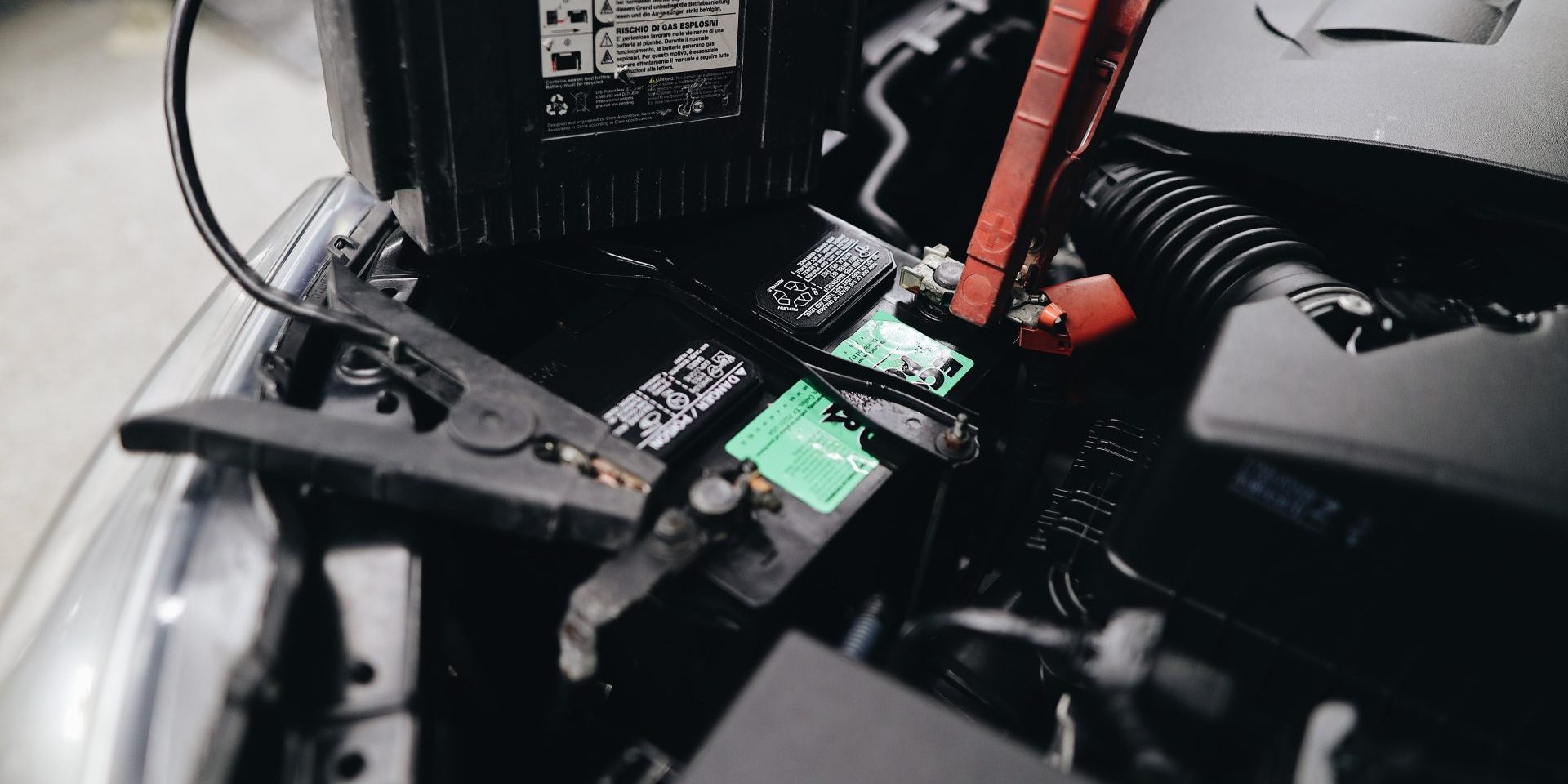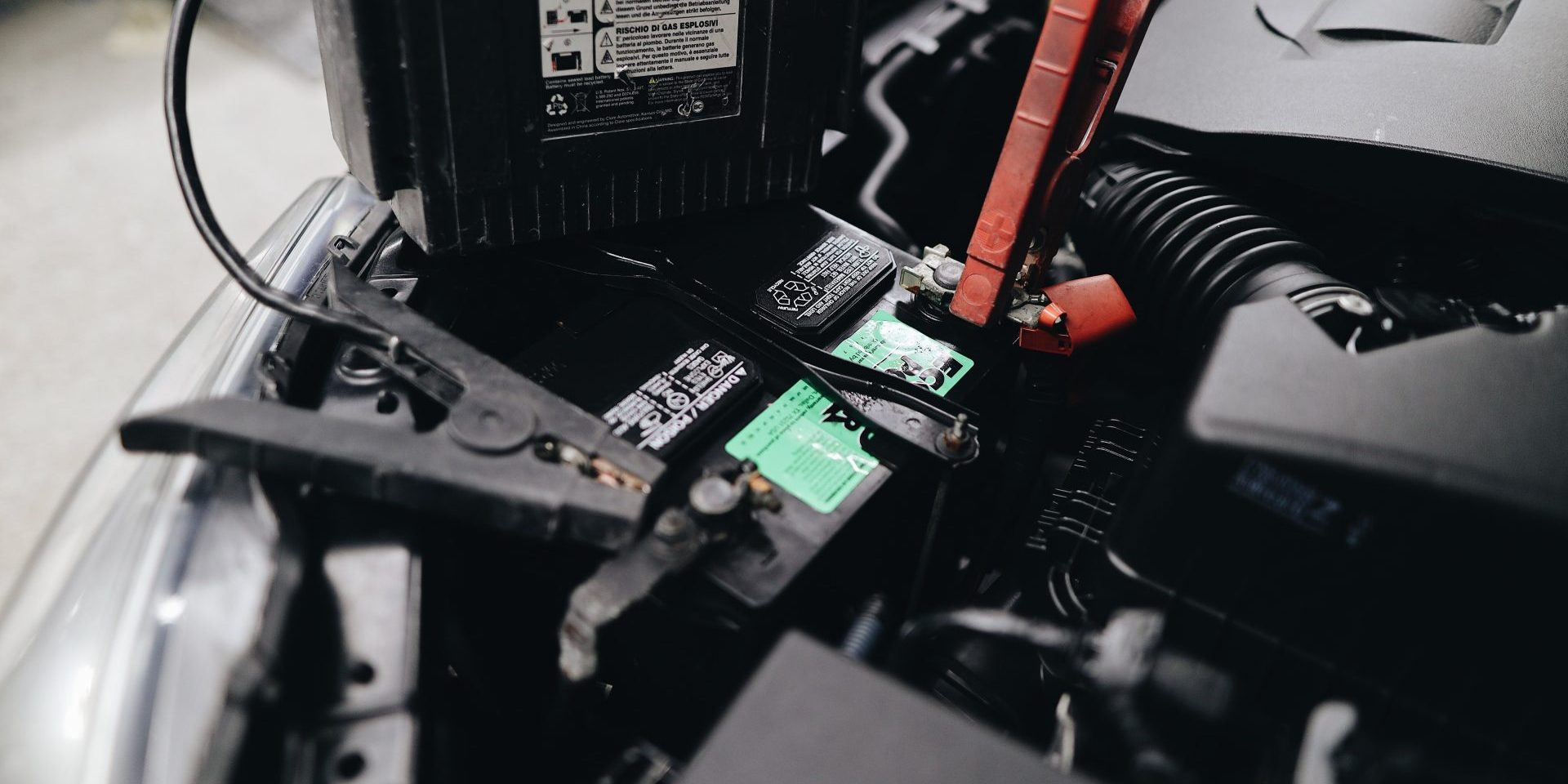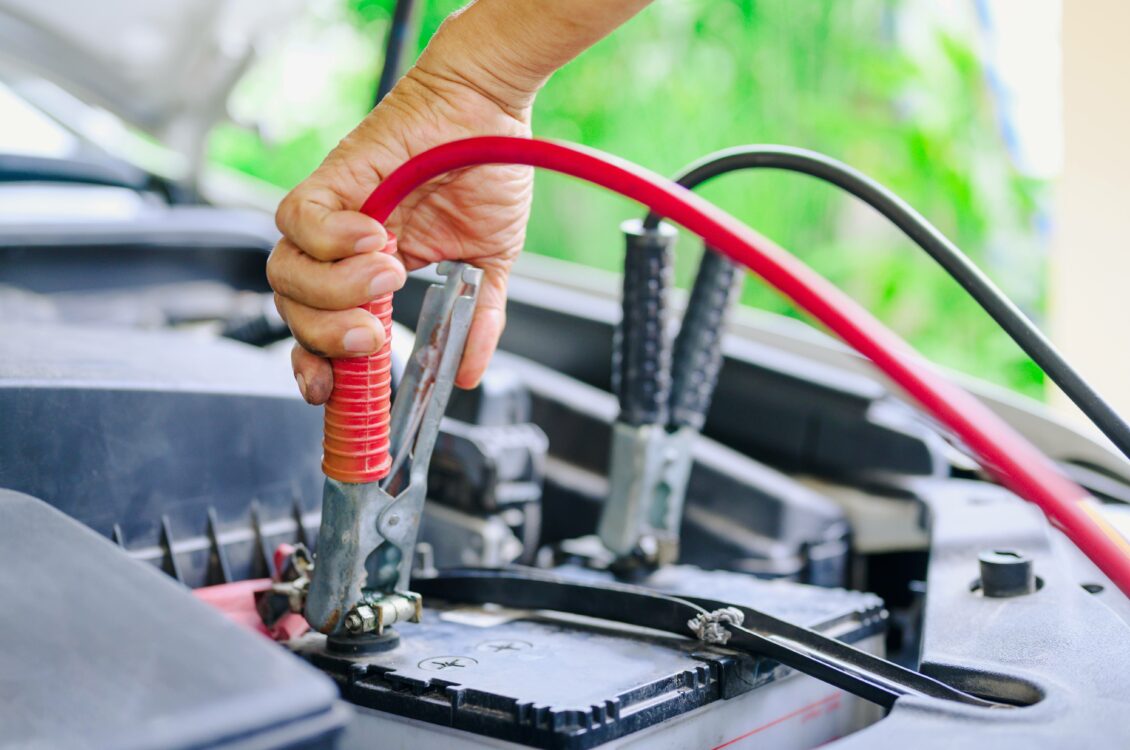How Many Volts Is a Car Battery: Understanding Your Vehicle’s Electrical System


When it comes to understanding the power behind your vehicle’s ignition and electrical systems, one of the fundamental questions is: How many volts is a car battery? The answer lies in the standard electrical potential that car batteries are designed to hold.
A typical car battery is rated at 12 volts; however, a fully charged battery will often show a voltage slightly above this, around 12.6 volts, due to the combined voltage of its six cells, each providing 2.1 volts when fully charged.
This voltage is key to not only starting your car but also to powering the myriad of electrical components within it. Understanding the voltage of a car battery is essential for maintenance and when troubleshooting potential issues.
Car batteries are essential for starting the engine as they provide the necessary electrical power to crank the starter motor. Beyond just starting the vehicle, the battery also stabilizes the power supply and supports electrical demands during periods when the alternator’s output is not sufficient. Ensuring that a car battery is maintained at the appropriate voltage is crucial, as it affects both the ability to start a car and the longevity of the battery itself. Regularly measuring and testing battery voltage with tools such as a multimeter can help diagnose potential battery health issues and gauge when a replacement may be necessary.
Key Takeaways
- A fully charged car battery at rest typically measures 12 volts.
- With the engine running, car battery voltage should be between 13.7 to 14.7 volts.
- Proper battery voltage is vital for starting the vehicle and the battery’s overall health.
Understanding Car Battery Voltage
Car battery voltage is a critical parameter that determines the performance and health of your car’s electrical system.
Basics of Voltage and Battery Design
Voltage is the measure of electrical potential between two points. For car batteries, this is typically a measure of how much electrical energy the battery can supply to start and run the vehicle. The common design in most vehicles is a 12-volt lead-acid battery, which is made up of six cells. Each cell provides 2.1 volts, combining to form a total of 12.6 volts when fully charged.
Standard Voltage and Variations
The standard voltage for a typical car battery when not under load (resting voltage) is 12.6 volts. This signifies a fully charged battery. When the car’s engine is turned off, the voltage of the car battery should ideally be within the voltage range of 12.2 to 12.6 volts. However, when the engine is running and the alternator is charging the battery, the voltage should increase to between 13.7 and 14.7 volts. It is important to maintain the car battery within this ideal car battery voltage range to ensure the vehicle operates correctly.
Electrical Components and Functions
The car battery and alternator are integral to the electrical system of a vehicle, providing the necessary electric power to start the engine and operate various electrical components such as headlights.
Role of the Alternator
The alternator serves as a pivotal generator of electric power within a vehicle’s electrical system. It transforms mechanical energy into electrical energy, replenishing the battery while the engine is running and supplying additional power to systems and accessories. When the engine is in operation, the alternator’s output should typically range between 13.7 and 14.7 volts, ensuring that the battery remains fully charged and capable of delivering the 12.6 volts required for optimal performance.
Headlights and Engine Systems
As part of the electrical system, the headlights rely on the battery for power and are the most visible electrical components of a car. They must receive a constant and stable supply of voltage to function effectively. This is especially important when other high-demand electrical systems are in use. Simultaneously, the engine controls, including the fuel injection system and ignition coils, also depend on the battery to provide a reliable electrical source for both starting the engine and ensuring a smooth operation. These systems are designed to operate within specific voltage ranges to maintain efficiency and performance.
Measuring and Testing Battery Voltage
Testing a car battery’s voltage is a straightforward process that involves using a multimeter and understanding the results to assess battery health. This section explores the proper methods to measure the resting voltage, interpret the findings, and conduct a battery load test.
Using a Multimeter
To test a car battery voltage, one needs a multimeter set to measure direct current voltage (DCV). Set the multimeter to the 20-volt scale to cover the expected range of a 12-volt battery. Connect the black lead to the negative terminal and the red lead to the positive terminal of the battery. The multimeter will then display the battery’s voltage.
Interpreting Voltage Readings
A healthy, fully charged car battery should have a resting voltage between 12.6 to 12.8 volts. If the reading is around 12.2 to 12.5 volts, the battery is partially discharged but may still be able to start the engine. Voltage under 12 volts suggests a weak or failing battery, and it may need recharging or replacing.
| Voltage Range (Volts) | Battery Status |
|---|---|
| 12.6 – 12.8 | Fully Charged |
| 12.2 – 12.5 | Partially Charged |
| Below 12 | Weak/Failing, Recharge Needed |
Battery Load Test
A battery load test can help determine the battery’s ability to maintain voltage under load. For this test, a load tester or a specialized multimeter is applied while the battery performs work, such as starting the engine. If the voltage drops significantly under load, this indicates that the battery may not have enough capacity and could fail to start the engine when required.
Factors Affecting Car Battery Life
The longevity and performance of a car battery can be significantly influenced by several factors, such as its maintenance, exposure to corrosive elements, and the natural aging process.
Maintenance and Care
Proper maintenance plays a critical role in extending the life of a car battery. Consistent check-ups can ensure the battery remains in good condition. Key maintenance practices include:
- Keeping the battery clean and free of dirt and grime
- Ensuring the battery is securely mounted to prevent vibrations
- Checking the electrolyte level (for non-sealed batteries) and topping up with distilled water when necessary
Signs of Corrosion and Wear
Batteries are susceptible to corrosion, which can impede their ability to operate effectively. Indications of deterioration include:
- White, blue, or greenish deposits around the terminals
- Damaged or swollen battery casing
- Eroded terminals and clamps
Regular cleaning of the battery terminals and clamps can prevent corrosive build-up and maintain a strong electrical connection.
Battery Lifespan
A car battery’s lifespan is typically three to five years, but this can vary based on usage and care. Factors affecting a battery’s lifespan include:
- Frequency of use: Infrequent use can lead to a decreased lifespan due to sulfation.
- Temperature extremes: Hot and cold climates can reduce battery life.
- Driving habits: Short trips do not allow the battery to fully recharge.
Maintaining the battery in a charged state and minimizing exposure to extreme temperatures can help preserve its lifespan.
Symptoms of a Failing Battery
Identifying the signs of a failing car battery is important to avoid potential breakdowns and maintain your vehicle’s reliability.
Starting Issues and Power Loss
When a car’s battery is weak or dead, it may struggle to provide the necessary power to start the engine. Symptoms can include:
- Slow engine crank: The engine takes longer than usual to start, often producing a sluggish or labored sound.
- Complete power loss: The vehicle does not respond when the key is turned or the start button is pressed, indicating a dead battery.
Visual Inspection Findings
A physical inspection can reveal several indicators of a battery’s state of charge or potential issues:
- Swollen battery case: A battery case that appears bulged or warped is a sign of overcharging or extreme temperatures affecting the battery.
- Corrosion on terminals: White, ashy substance on the metal parts of the battery can indicate corrosion that interferes with the battery’s ability to transmit power.
Electrical Issues During Vehicle Operation
Other electronic components in the vehicle can display telltale signs when the battery is not functioning properly:
- Dimming headlights: If the headlights dim, especially during startup, it often points to inadequate power from the battery.
- Frequent electrical issues: Components like power windows, radio, and dashboard lights may operate intermittently or fail to work, suggesting the battery is not holding a sufficient charge.
Starting and Charging System
The electrical systems of a vehicle hinge on the performance of both the starting and the charging system, which are fundamental for initiating and maintaining the vehicle’s operation.
Function of the Starter
The starter, an electric motor, initiates the engine’s operation. When a car’s ignition is activated, the starter motor engages and draws power from the battery to turn the engine over, beginning the combustion process that is necessary to start a car.
The Charging Process
Once the vehicle is running, the charging system takes over to replenish the battery’s charge. This system consists of an alternator—a generator that produces electricity, powered by the engine’s rotation, and a voltage regulator to ensure the battery receives the correct amount of direct current (DC) voltage. While the engine is running, the alternator typically supplies between 13.7 and 14.7 volts to both maintain the battery’s charge and to power the vehicle’s electronic systems.
Replacement and Disposal of Car Batteries
When it’s time to replace a car battery, selecting the right one and disposing of the old unit responsibly are both important steps to ensure vehicle reliability and environmental sustainability.
Choosing the Right Replacement
To select a suitable replacement battery, it’s important to consider size, brand, and the specific power requirements of the vehicle. Batteries come in various sizes, so it’s vital to choose one that fits securely in the vehicle’s battery tray. Most auto parts stores can assist in finding a battery that matches the original specifications. Compatibility with the vehicle’s make and model ensures the battery can deliver sufficient volts and amperage to start the engine and run electrical accessories.
- Check the Owners Manual: It usually specifies the battery size which fits your car’s make and model.
- Verify with an Auto Parts Store: Employees can confirm the correct battery for your vehicle, often based on an in-store database.
Proper Disposal Methods
Once a new battery is in place, the old battery should be disposed of properly to prevent environmental damage from hazardous substances, such as lead and acid.
- Recycling Programs: Most auto parts stores offer recycling services for old car batteries.
- Specialist Firms: These companies specialize in disassembling and recycling battery components.
Using a certified recycling facility ensures harmful components are handled safely and valuable materials, like lead and plastic, are reclaimed for reuse. Recycling centers may also offer a financial incentive for turning in an old battery.
Advanced Battery Technologies
In the pursuit of increased energy storage and better performance, advances in battery technologies are vital for the automotive industry.
Hybrid and Electric Vehicles
Hybrid and electric vehicles (HEVs and EVs) employ advanced battery systems to improve energy efficiency and reduce environmental impact. Hybrid vehicles utilize batteries that support an internal combustion engine, increasing fuel economy. These systems often rely on nickel-metal hydride (NiMH) or lithium-ion (Li-ion) batteries due to their higher energy densities and longer life cycles compared to traditional lead-acid batteries.
Electric vehicles, on the other hand, depend entirely on their battery packs for propulsion. The demand for higher energy densities and faster charging capabilities has led to the growth of advanced Li-ion technologies. This allows for lengthier driving ranges, with some EVs now achieving ranges comparable to gasoline-powered vehicles. Battery management systems also play a key role in automotive maintenance for these vehicles, ensuring the longevity and safety of the battery pack.
Developments in battery technology continue to address the specific needs of HEVs and EVs, focusing on factors such as weight, cost, and charging speed. The adaptation and improvement of these technologies remain central to the progression of the automotive industry.
You may also like…
How long to leave battery disconnected to reset car computer










